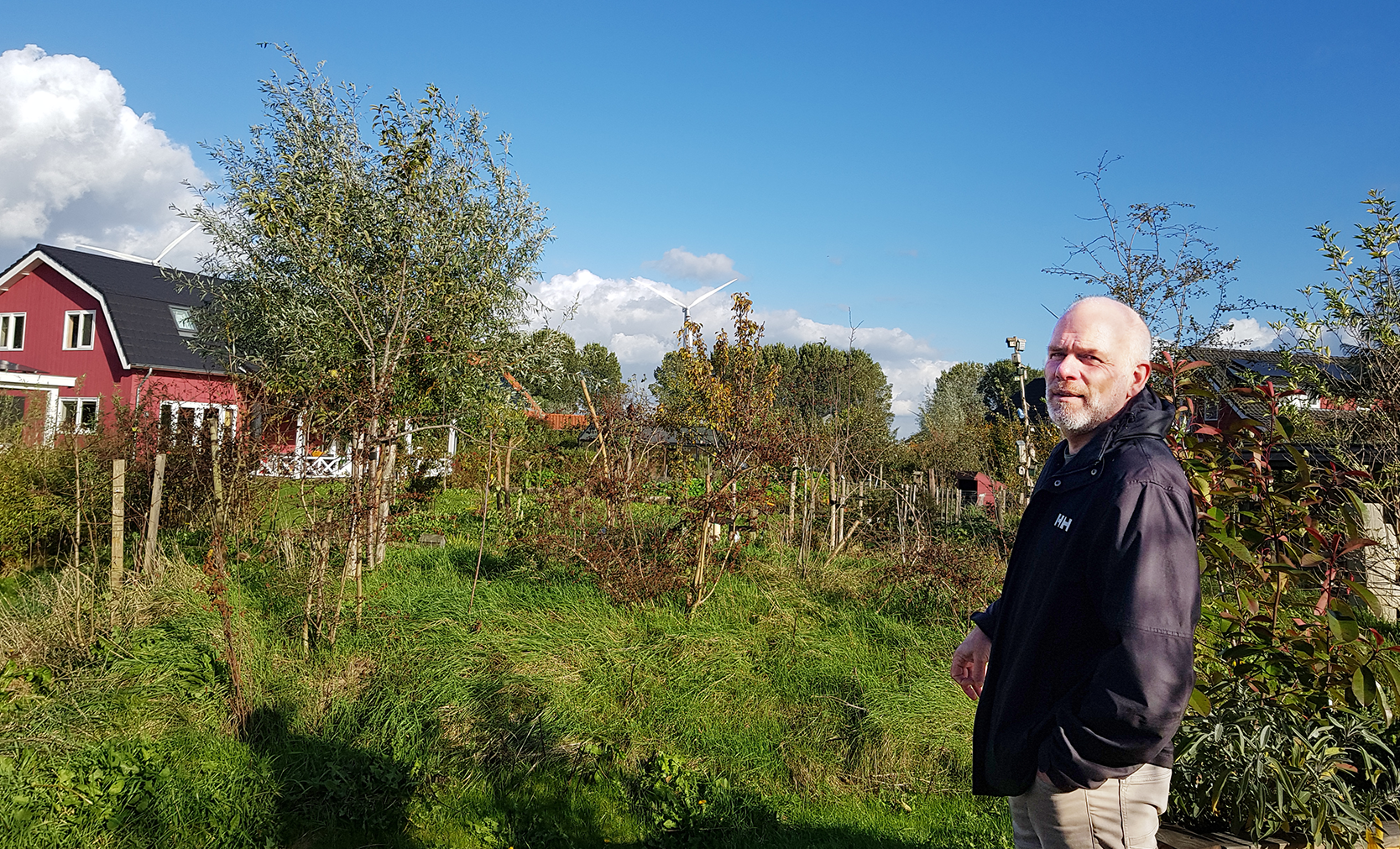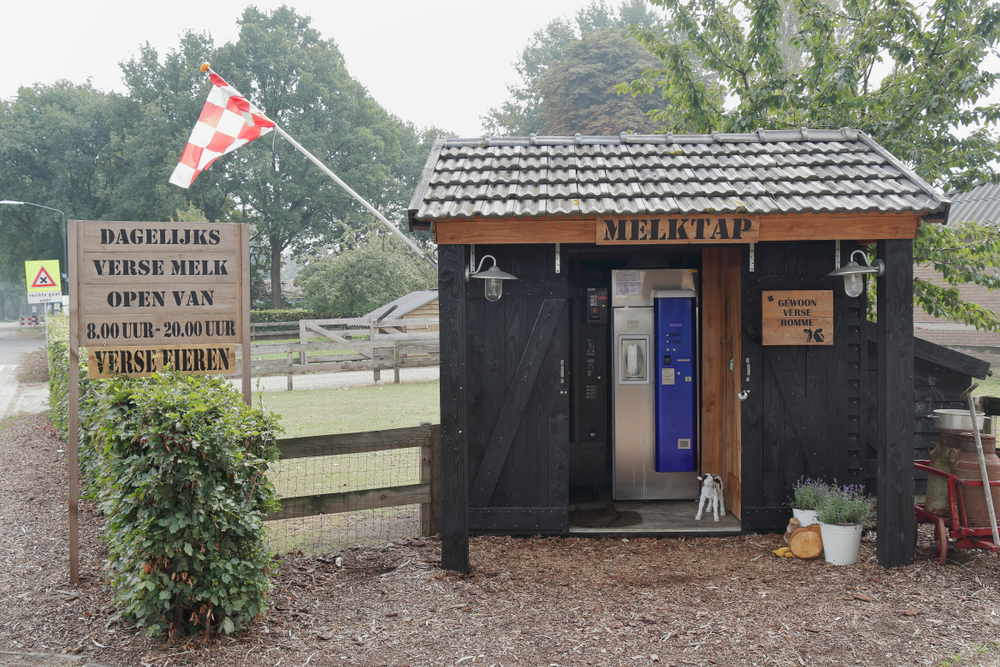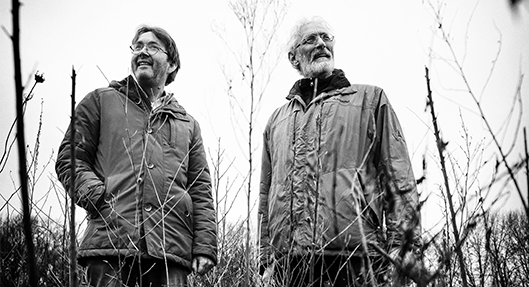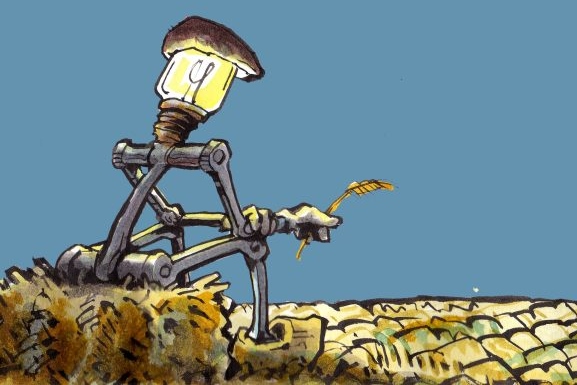Oosterwold is a sprawling suburb to the north-east of Almere town centre. On its 600 hectares, an experiment has been going on here since 2016, aimed at combining urban life with farming. There are now about 5000 residents, and this is just the start. On the other side of the A27, in the neighbouring municipality of Zeewolde, a much larger section of Oosterwold awaits development.
Jan Eelco Jansma can rightly consider himself the founding father of urban farming in Oosterwold. Back in 2009, Resource reported on his dream of getting this ambitious plan off the ground. This month, he will receive his PhD for a sociological study of the planning and implementation of the neighbourhood. It was he who prompted the urban planners of Almere to go down the route of urban farming. They were sceptical at first. ‘Who wants to live in the middle of a field of potatoes?’ was the scathing response.
I think it’s cool of Almere to give this radical approach a try
Jansma made that comment the title of his thesis.
Oosterwold is a combination of ‘wild’ living and urban farming. ‘Wild’ refers to self-build projects. ‘People here are at the helm in the development of their neighbourhood,’ explains Jansma. Self-organization is the driving principle. And the main planning rule is that half of each plot (51 per cent, to be precise) must be used to produce food. How you carry out that task is up to you. And that freedom produces attractive and extremely diverse housing. There’s no other place like it in the Netherlands.
Vegetable gardens
But the freedom poses a bottleneck as well, especially when it comes to developing urban farming. ‘The municipality has left that development too much to chance,’ is one of Jansma’s conclusions. ‘Residents do have to submit a plan in advance, outlining how they are going to produce food, but the implementation is not monitored.’ When analysing drone images a few years ago, Jansma saw that less than one third of the residents achieved the norm established for urban farming. That was a disappointment for him.
What is more, the farming that was going on often didn’t extend beyond a vegetable garden. At that rate, says Jansma, the goal laid down in the plans, of having Oosterwold supply 10 per cent of Almere’s food needs, is not feasible.
Various reasons can be identified for this disappointment. ‘It was the decision of the planners back in the first phase of the development of the neighbourhood to do things this way, partly to keep project developers out of it,’ says Jansma. ‘But they envisaged a much more diverse landscape, with smallholdings here and there, for example. In practice there are mostly houses with vegetable gardens, and the area has become a random patchwork.’ That fragmentation is partly related to the ever-rising land prices, making for ever-smaller plots.
New cousin
Then there is the fact that not all the residents are equally interested in producing food. Jansma: ‘Of course, people want to live here for more than one reason: beside the urban farming, there’s the green environment, the proximity to Amsterdam, the price of the land (in the early years especially), and the chance to self-build. There is a group of diehard urban farmers, but there are also residents who have no interest in that at all, and just plant a few fruit trees to satisfy the rules.
It was sneered at as Mickey Mouse farming
And farming is a skill. The majority of the residents do feel an affinity with the idea of urban farming but lack the knowledge and skills to engage in it.’
Nevertheless, you couldn’t call Jansma’s project a failure. The gardens of Oosterwold do produce food. ‘But you’re never going to feed a town with urban farming. We still need conventional farming. You should see urban farming as the new cousin in the agriculture family. It has its place in the full palette of food production methods. Gearing an entire neighbourhood to it is a planning choice. I think it was cool of Almere to give this radical approach a try. And yes, when you do that, not everything will go to plan. But Oosterwold has also challenged a lot of people to try some kind of urban farming. There is now a colourful range of bakeries, care farms, vineyards, pick-your-own gardens and tea gardens. Not to mention the organic farm Vliervelden, with its residential community.’
Odd ones out
Jansma emphasizes that Oosterwold is certainly not a blueprint for planning urban farming. ‘Could it have been done differently and better? No doubt. But see it as an incredibly interesting learning process, a pilot that hasn’t been done like this anywhere else in the world. Other towns can all learn from it for future efforts. For example, that self-organization is more than just “figure it out for yourself”. And that leaving food production to amateurs is tricky. A radical planning choice like this doesn’t work without a new division of tasks and responsibilities among those involved.’
‘Twenty years ago I wondered whether we could get a better connection between cities and farming,’ recalls Jansma. ‘Urban farming was totally new at the time. My colleague Jan Willem Schans and I were the odd ones out at WUR in that regard. It was sneered at as Mickey Mouse farming. And just look where we are now, with projects like Oosterwold, vertical farming, Herenboeren (a Dutch form of community farming, ed.) and many more innovations. There is tremendous dynamism. What urban farming has set in motion has proved irreversible.’

 Jan Eelco Jansma: ‘You should see urban farming as the new cousin in the agriculture family.’ Photo Resource
Jan Eelco Jansma: ‘You should see urban farming as the new cousin in the agriculture family.’ Photo Resource 

